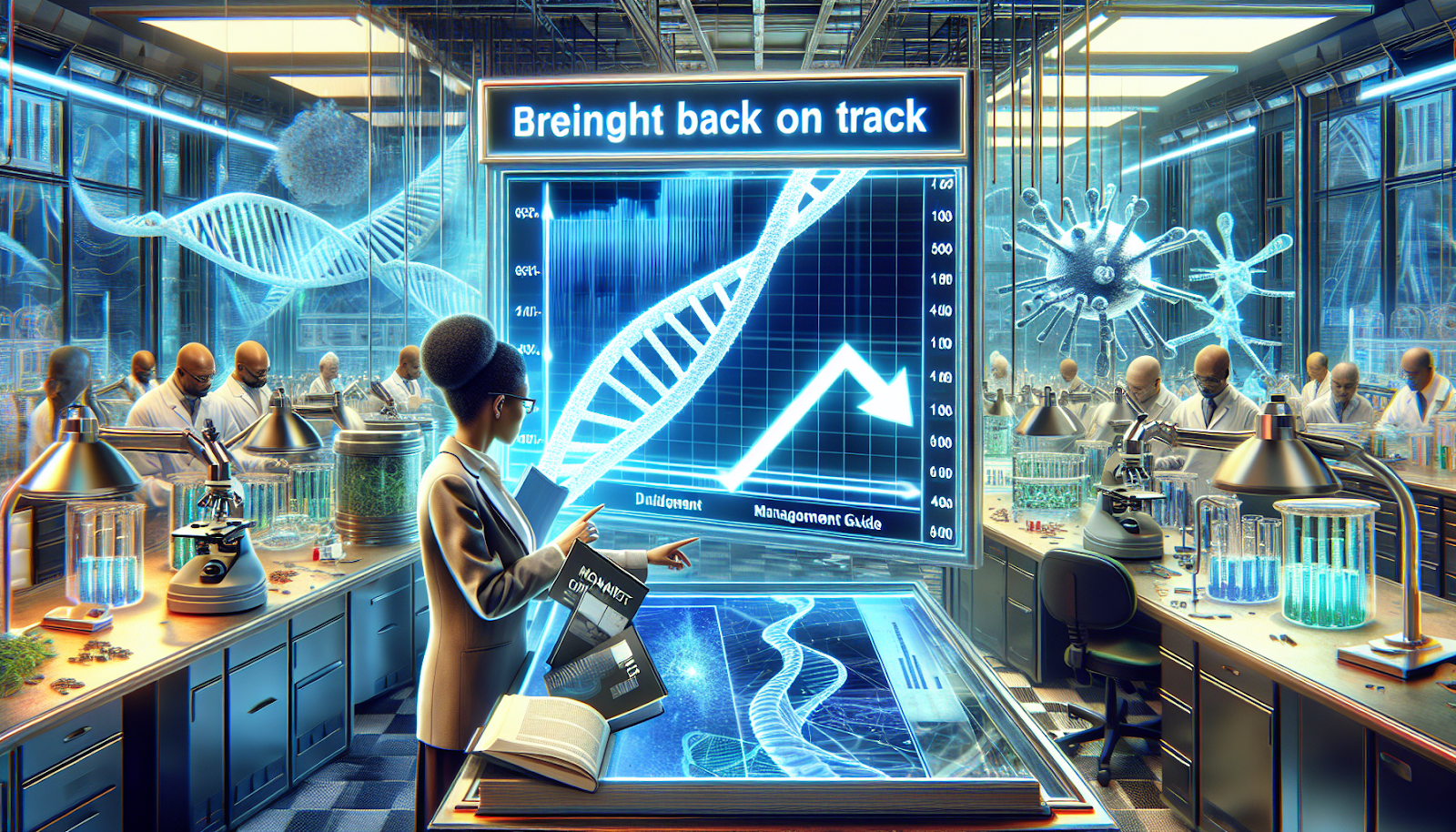By Seth Carlson
•
May 7, 2024
Cybersecurity, the art and science of protecting data and assets linked to the internet, is a field that's rapidly growing in importance and scope. As it stands, the industry faces a stark deficit of professionals, with a projected 4 million positions remaining unfilled despite efforts to boost recruitment. This gap underscores not just the demand for cybersecurity experts who can assess, implement, and enhance an organization's cyber defenses, but also the broad array of opportunities available across technical and non-technical positions alike. Given the Bureau of Labor Statistics' expectation of a 32% surge in demand for information security analysts by 2032 , the trajectory for cybersecurity careers looks promising. This article aims to shine a light on the highest paying cyber security jobs in 2024, from the pivotal role of Chief Information Security Officer (CISO) to specialized positions like Penetration Tester and Cybersecurity Architect. By exploring these key cyber security positions, alongside the required adaptability, communication skills, and the ability to preempt and mitigate security breaches, readers will gain insights into the cyber security jobs salary landscape and understand why cybersecurity jobs pay a premium in today’s tech-centric world. Chief Information Security Officer (CISO) Salary Overview The Chief Information Security Officer (CISO) holds a pivotal role in safeguarding an organization's data and information security. The median annual salary for a CISO in the United States is significant, reported at $256,040 , with expectations to rise to $584,000 by 2024 . Variations in salary are influenced by several factors including geographic location, industry, experience, and the individual's skill set. For instance, in major U.S. cities like New York and San Francisco, average base salaries for a CISO are $280,153 and $298,035 respectively . Global Salary Comparisons Internationally, the salary for a CISO also varies. In the United Kingdom, the average base salary ranges from £122,281 in London to £45,446 in Edinburgh. Similarly, in Australia, CISOs earn between AU$190,000 in Sydney to AU$180,597 in Brisbane. These figures underscore the global demand and the valuation of skilled CISOs across various major cities worldwide. Role and Responsibilities CISOs are tasked with developing and enforcing security policies that protect critical data and manage the organization's overall information security posture. Their responsibilities extend to overseeing technology and cybersecurity, ensuring data integrity, and protecting against cyber threats. The role requires a blend of technical skills and strategic oversight, making it both challenging and essential for maintaining an organization's cybersecurity integrity. Factors Influencing Salary Several factors affect a CISO's salary including their educational background, certifications, additional skills, and years of experience. Moreover, the size and sector of the company also play critical roles, with salaries ranging significantly depending on whether the organization is a startup, a multinational corporation, or falls within sectors like healthcare or finance. Career Advancement For CISOs looking to advance their careers and potentially increase their earnings, focusing on acquiring specific cybersecurity certifications, gaining diverse experience, and enhancing skills such as risk management and information governance are beneficial strategies. The demand for skilled CISOs is expected to grow, reflecting the increasing importance of robust cybersecurity measures in today’s digital landscape. Cyber Security Director Salary and Compensation The role of a Cyber Security Director commands a notable salary, reflecting the critical nature of their responsibilities in safeguarding an organization's digital assets. The average annual salary for this position is approximately $170,981 , with a potential range from $196,000 to $341,000 depending on the company and location. Specific examples from various companies show a wide salary range, such as $263,983 at AT&T and $144,367 at Bravura Information Technology Systems. Additional compensation, which can include bonuses and other incentives, averages around $92,483 annually , further enhancing the financial attractiveness of this career path. Role and Responsibilities Cyber Security Directors are tasked with managing a team of security professionals and overseeing the strategic implementation of security measures across the organization. They play a crucial role in risk assessment and are pivotal in developing robust security protocols that align with organizational goals. Career Prospects and Growth The demand for skilled Cyber Security Directors is expected to grow as businesses continue to prioritize cybersecurity in response to an increasing number of threats. This role not only offers a lucrative salary but also a dynamic career trajectory influenced by evolving technology landscapes. Key Skills and Certifications Successful Cyber Security Directors often hold advanced certifications which may include CISA, CISSP, CompTIA Security+, CRISC, and Certified Ethical Hacker (CEH). These qualifications underscore their expertise and commitment to staying at the forefront of cybersecurity practices. Lead Software Security Engineer Salary Overview The Lead Software Security Engineer plays a crucial role in maintaining cloud security, a necessity as 94% of businesses operate on the cloud . In the United States, the median annual salary for this position is $140,745 , with total compensation ranging from $138,000 to $205,000. Additional earnings, including bonuses, commissions, and profit-sharing, can average $26,308 annually. Experience-Based Salary Variations The salary for a Lead Software Security Engineer varies significantly with experience: 0-1 Years: $110,000 - $150,000 1-3 Years: $115,000 - $165,000 4-6 Years: $130,000 - $185,000 7-9 Years: $145,000 - $200,000 10-14 Years: $160,000 - $220,000 15+ Years: $180,000 - $250,000 Industry-Based Salary Insights Salaries also vary by industry, with the legal sector offering $150,000 to $210,000, while information technology offers $130,000 to $190,000. The financial sector shows slightly lower ranges from $125,000 to $185,000. Top Paying Companies and Cities Leading companies like Salesforce and ADP offer top salaries for this role, with Salesforce paying an average of $204,941 per year . Among cities, San Francisco leads with an average salary of $186,375 for Lead Software Security Engineers. Related Jobs and Salaries Positions related to Lead Software Security Engineer that offer higher salaries include Product Security at $159,405 and Remote Security Engineer at $152,773. This indicates a broad range of lucrative opportunities within the cybersecurity field. Cybersecurity Architect Salary Insights The role of a Cybersecurity Architect is critical in designing secure networks and systems. In the United States, as of April 2024, the average salary for this position is reported at $118,000 annually , with a typical range between $94,244 and $122,777. Factors influencing these figures include educational background, relevant certifications, additional skills, and years of experience. Regional Variations Salaries for Cybersecurity Architects can vary significantly based on location. For instance, in Florida, the average salary stands at $101,059, with top earners reaching up to $134,886 annually . Conversely, in Pennsylvania, the average salary is notably higher at $136,401 . This variation highlights the regional disparities in compensation within the United States. Global Salary Comparisons Internationally, the salary for Cybersecurity Architects also varies. In India, the average annual salary is approximately INR 23,00,000, while in the UK, it is £47,941, and in Australia, AUD 123,800. These figures reflect the global demand for skilled professionals capable of safeguarding digital infrastructures against increasing cyber threats. Qualifications and Demand Qualifications for a Cybersecurity Architect typically include a Bachelor’s degree in Computer Science or a related field, with a preference for candidates holding a Master's degree. With cyber attacks on the rise, the demand for these professionals continues to grow, underlining the importance of advanced education and specialized skills in this field. Compensation Structure The compensation for Cybersecurity Architects is not only tied to their annual salary but also includes potential bonuses and benefits. For example, the average weekly pay is $2,623, translating to a monthly income of approximately $11,366. This comprehensive compensation package is designed to attract and retain top talent in a highly competitive field. Penetration Tester Salary Overview and Influencing Factors Penetration Testers, tasked with infiltrating computer systems to detect vulnerabilities, see a broad salary range based on numerous factors. In the U.S., salaries can vary significantly, with figures ranging from $92,159 to $111,612 annually . Entry-level positions start around $76,042, climbing to over $200,000 for senior-level experts. Factors influencing these salaries include experience, education, specific certifications, and the industry sector. Global Salary Insights Globally, Penetration Testers earn an average base salary of $75,083 , with notable differences across countries. In the UK, the median salary is approximately £61,021, while in India, it is around INR 18,19,269. European salaries average at €73,912. These variations highlight the global demand for skilled professionals in this field. Career Prospects and Growth The demand for Penetration Testers is escalating, with nearly 600,000 cybersecurity job openings in early 2022 and projections of 3.5 million unfilled positions by 2025. This growth is driven by the increasing need for cybersecurity in companies with remote operations and the continuous rise in cyber threats. Compensation Structure The total compensation for a Penetration Tester not only includes a competitive salary but also benefits such as bonuses, incentives, and opportunities for professional development. Companies like Google and Microsoft offer compensation packages reaching up to $235,744 and $184,305 respectively. Specializations and Certifications Specializations and certifications significantly enhance a Penetration Tester's earning potential. Certifications such as Certified Ethical Hacker (CEH), GIAC Penetration Tester (GPEN), and Licensed Penetration Tester (LPT) are highly valued, with salaries for certified professionals ranging from $84,933 to $113,000. Additional skills in programming, AI solutions, and cloud platforms further boost salary prospects. Conclusion Penetration Testing remains a lucrative and essential career within cybersecurity, reflecting its critical role in maintaining network security and integrity. The profession not only promises substantial financial rewards but also offers diverse pathways for career advancement and specialization. Information Security Analyst Role and Responsibilities Information Security Analysts play a critical role in safeguarding an organization's digital assets. Their primary duties include monitoring and detecting security threats, performing compliance control testing, and developing training programs to minimize risks. They are responsible for the implementation of security measures to protect computer networks and systems from cyber threats. Educational and Certification Requirements To become an Information Security Analyst, a bachelor's degree in computer science, information assurance, or a related field is generally required. Relevant certifications such as CISSP, CISA, CISM, and CompTIA Security+ enhance a candidate's qualifications and are highly recommended. Salary and Career Outlook The median annual wage for Information Security Analysts was reported at $103,590 in 2020, with expectations of significant growth due to increasing cyber threats. The U.S. Bureau of Labor Statistics projects a 35% job growth from 2021 to 2031, highlighting the demand for skilled professionals in this field. Skills and Tools Key skills for Information Security Analysts include a strong understanding of network security, risk management frameworks, and the ability to analyze network traffic for anomalies. Proficiency in tools like Splunk is also essential for effective data analysis and threat detection. Geographic Salary Variations Salaries for Information Security Analysts can vary based on location, with the highest paying industries being securities, commodity contracts, and financial investments. This variation emphasizes the importance of geographical and industry factors in career planning for cybersecurity professionals. Conclusion As we draw our exploration of the highest paying cybersecurity careers in 2024 to a close, it's clear that the field offers a wealth of opportunities for those equipped with the right skills and qualifications. From the strategic oversight of a Chief Information Security Officer (CISO) to the detail-oriented tasks of an Information Security Analyst, the roles we've discussed underscore the dynamic and crucial nature of cybersecurity work. The future prospects within this industry not only promise rewarding financial returns but also the chance to play a pivotal part in safeguarding digital infrastructures against ever-evolving threats. The significance of these careers extends beyond individual success, highlighting a broader societal reliance on skilled cybersecurity professionals to protect sensitive data and maintain trust in digital systems. As the demand for these experts continues to outstrip supply, the importance of pursuing relevant education, certifications, and continuous learning cannot be overstated. For those considering a career in cybersecurity or seeking to advance their position, the path forward is marked by significant opportunity for growth, challenge, and contribution to the digital safety of our interconnected world. FAQs What are the prospects of a cybersecurity career in 2024? Cybersecurity is anticipated to offer numerous specialization opportunities in 2024. While it's possible to secure an entry-level position in cybersecurity with a bachelor's degree, advanced education in the field may be necessary to access the most intriguing and well-compensated roles. Which cybersecurity specialization yields the highest income? The cybersecurity field boasts several high-paying roles, with the top salaries being commanded by positions such as Chief Information Security Officer, Network Security Architect, Network Security Engineer, Cloud Security Engineer, Security Sales Engineer, Bug Bounty Specialist, Application Security Engineer, and Information Security Analyst. Is it feasible to earn $500,000 annually in a cybersecurity role? Indeed, it is possible to earn as much as $500,000 per year in certain cybersecurity positions. For instance, professionals in the top 25% of security operations (SecOps) and governance, risk and compliance (GRC) roles average about $523,000 in annual cash compensation. Similarly, heads of product security departments earn around $447,000, deputy CISOs make approximately $465,000, and leaders in identity and access management receive about $360,000 per year. What is the peak salary one can expect as a cybersecurity analyst? The question regarding the highest salary for a cybersecurity analyst remains unanswered. However, given the lucrative nature of the field and the high earnings potential for other cybersecurity roles, it is reasonable to assume that experienced cybersecurity analysts can also command significant salaries.











































